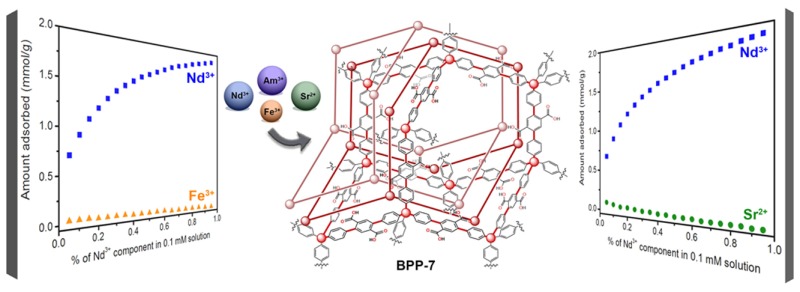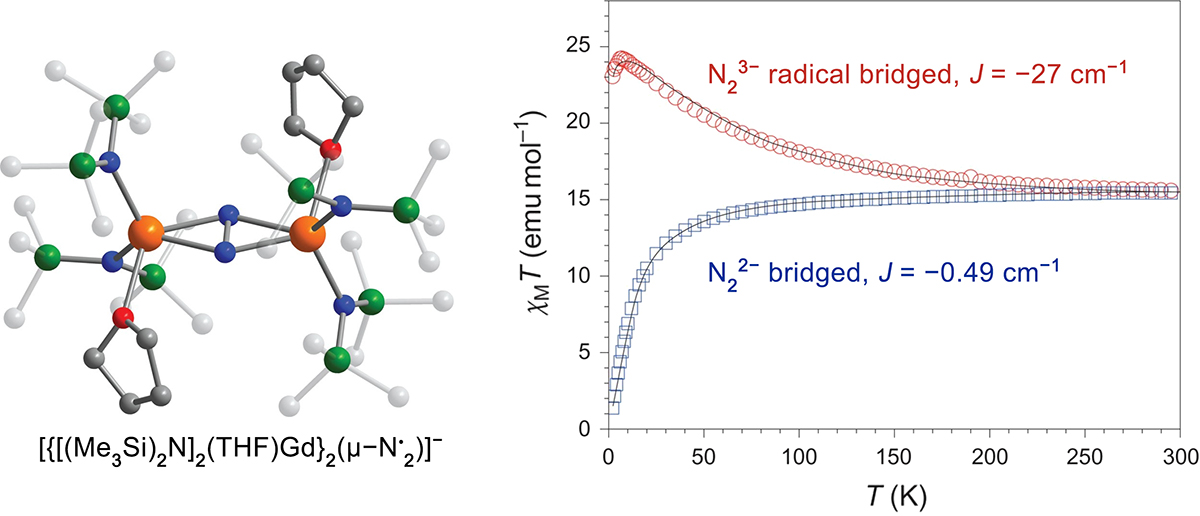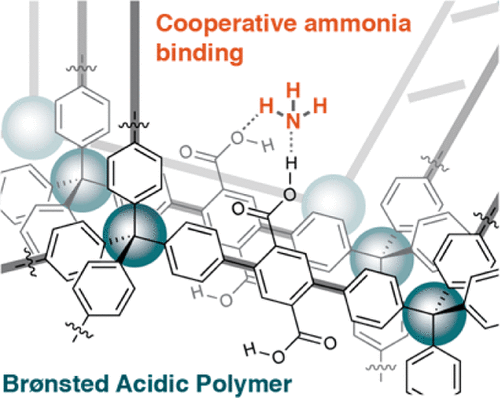Research
Research in the Long Group is focused on controlling chemical structure and function through molecular design. Within this paradigm, we employ the principles of coordination chemistry in the tailored synthesis of atomically precise molecules and materials with programmed properties, with the goal of achieving fundamental advances relevant to our technological, environmental, and energy future. We are developing new porous materials for diverse ranging from gas storage to water purification. We are also creating new high-performance magnetic molecules and conductive extended solids. Researchers in the group are rigorously trained in air-stable and inert-atmosphere molecular and materials chemistry and learn a range of physical methods to rigorously analyze and characterize new compounds, including gas adsorption analysis, X-ray and neutron diffraction, in situ spectroscopies, and SQUID magnetometry. Active research areas and representative publications are highlighted in individual research tabs. Research directions are continually evolving, and interested Ph.D. students and postdoctoral scholars are encouraged to read our recent papers and contact Prof. Long or group members affiliated with various research direction for additional information.
Functional Metal–Organic Frameworks
Metal–organic frameworks (MOFs) are crystalline, permanently porous solids with internal pore structures and local chemistries that can be precisely tuned using coordination chemistry. Guided by insights from molecular chemistry, biology, and traditional solid-state chemistry, we are harnessing the unique properties of MOFs (1) to achieve new mechanisms for cooperative gas adsorption reminiscent of those employed by natural enzymes; (2) to design new porous magnets and electronic conductors; (3) for applications in catalysis; and (4) featuring coordinatively unsaturated metal sites and unique pore architectures for selective guest adsorption relevant to gas storage and molecular separations. We are also developing new methods to produce these adsorbents in predictable nanocrystalline forms to optimize macroscopic properties relevant for industrial applications, such as crystallite size and morphology, and incorporating these nanocrystals within polymer membranes to generate mixed-matrix membranes that exhibit exceptional selectivities and permeabilities for industrially relevant separations.
Selected Publications
"Cooperative Carbon Capture and Steam Regeneration with Tetraamine-Appended Metal–Organic Frameworks" Kim, E. J.; Siegelman, R. L.; Jiang, H. Z. H.; Forse, A. C.; Lee, J.-H.; Martell, J. D.; Milner, P. J.; Falkowski, J. M.; Neaton, J. B.; Reimer, J. A.; Weston, S. C.; Long, J. R. Science 2020, 369, 392–396. [link] [pdf]
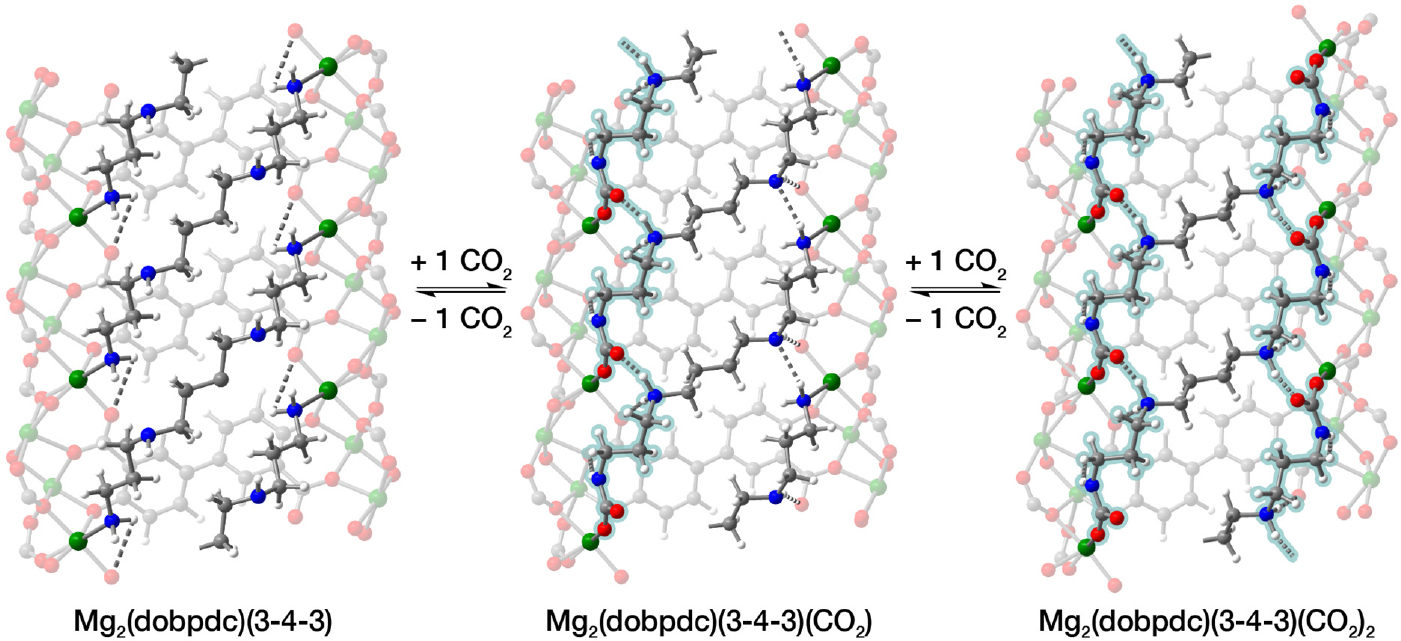
"Negative Cooperativity upon Hydrogen Bond-Stabilized O2 Adsorption in a Redox-Active Metal–Organic Framework" Oktawiec, J.; Jiang, H. Z. H.; Vitillo, J. G.; Reed, D. A.; Darago, L. E.; Trump, B. A.; Bernales, V.; Li, H.; Colwell, K. A.; Furukawa, H.; Brown, C. M.; Gagliardi, L.; Long, J. R. Nat. Commun. 2020, 11, 3087. [link] [pdf]

"Magnetic Ordering via Itinerant Ferromagnetism in a Metal–Organic Framework" Park, J. G.; Collins, B. A.; Darago, L. E.; Runčevski, T.; Ziebel, M. E.; Aubrey, M. L.; Jiang, H. Z. H.; Velasquez, E.; Green, M. A.; Goodpaster, J. D.; Long, J. R. Nat. Chem. 2021, 13, 594–598 [link] [pdf]
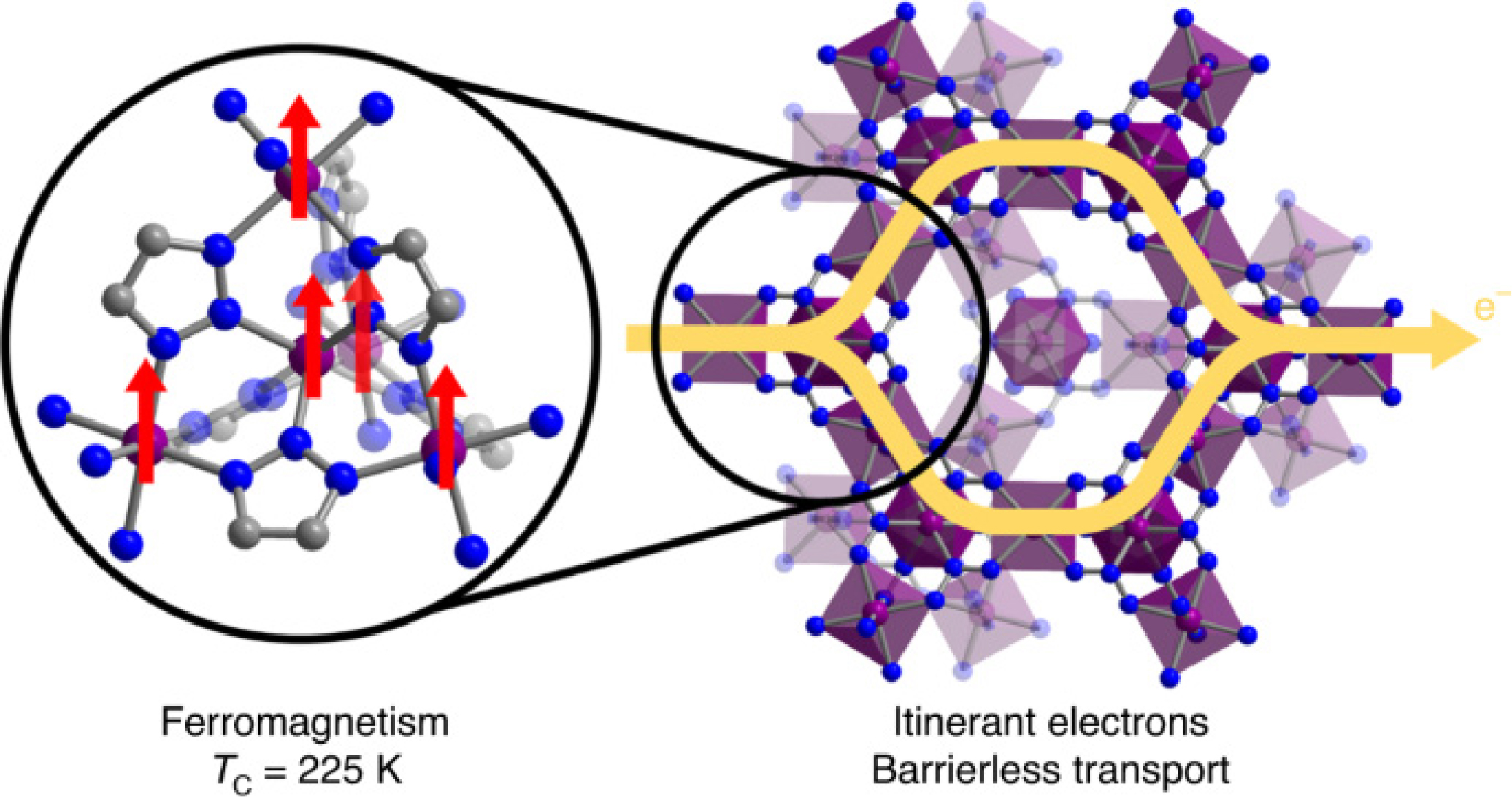
"Electron delocalization and charge mobility as a function of reduction in a metal–organic framework" Aubrey, M. L.; Wiers, B. M.; Andrews, S. C.; Sakurai, T.; Reyes-Lillo, S. E.; Hamed, S. M.; Yu, C.; Darago, L. E.; Mason, J. A.; Baeg, J.; Grandjean, F.; Long, G. J.; Seki, S.; Neaton, J. B.; Yang, P.; Long, J. R. Nat. Mater. 2018, 17, 625–632. [link] [pdf]

"Oxidation of Ethane to Ethanol by N2O in a Metal-Organic Framework with Coordinatively Unsaturated Iron(II) Sites" Xiao, D. J.; Bloch, E. D.; Mason, J. A.; Queen, W. L.; Hudson, M. R.; Planas, N.; Borycz, J.; Dzubak, A. L.; Verma, P.; Lee, K.; Bonino, F.; Crocella, V.; Yano, J.; Bordiga, S.; Truhlar, D. G.; Gagliardi, L.; Brown, C. M.; Long, J. R. Nature Chem. 2014, 6, 590–595. [link] [pdf]
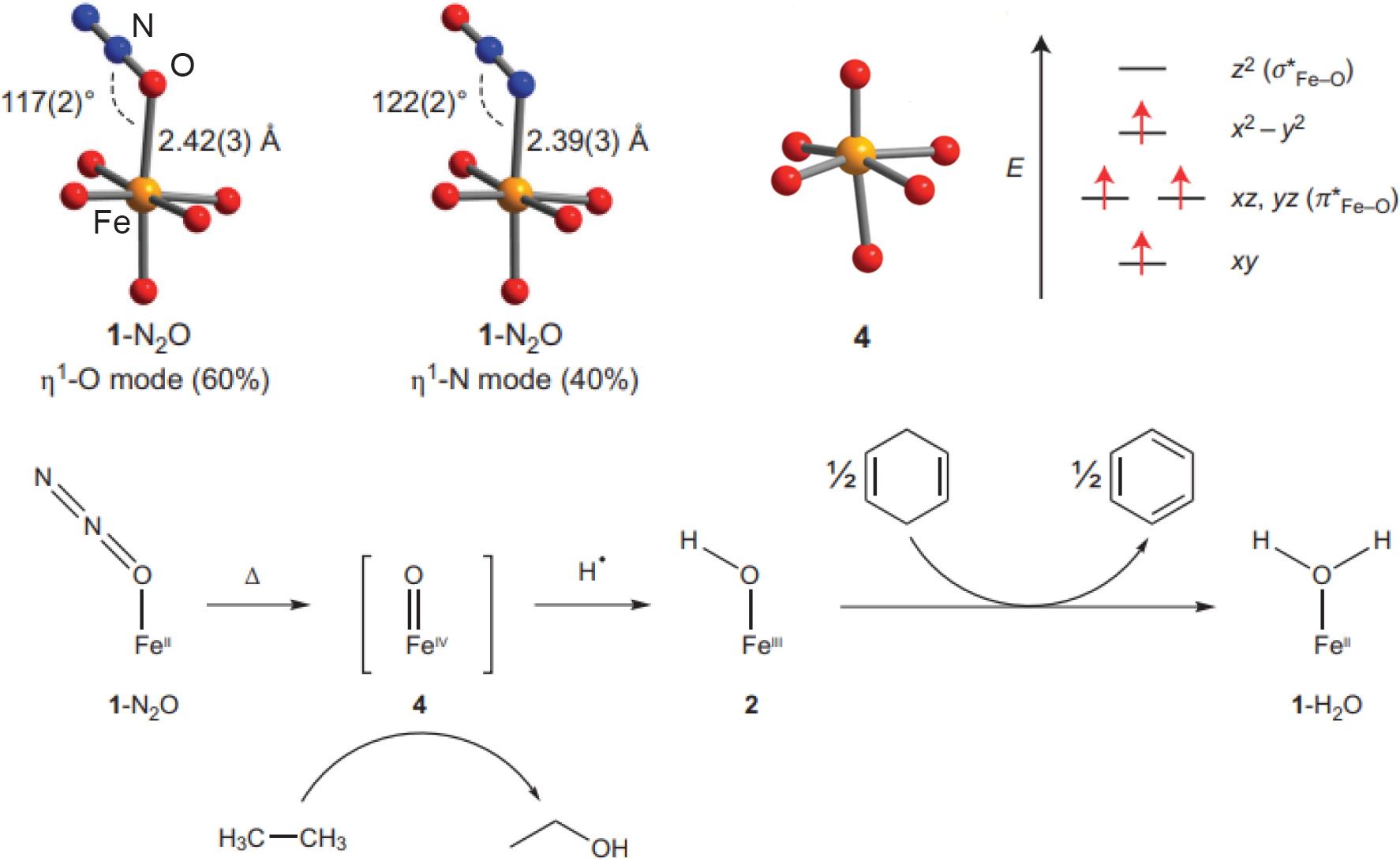
"Growth Modulation as a Means of Controlling Anisotropic Crystal Morphology and Molecular Diffusion in Co2(dobdc)" Colwell, K. A.; Jackson, M. N.; Torres-Gavosto, R. M.; Jawahery, S.; Vlaisavljevich, B.; Falkowski, J. M.; Smit, B.; Weston, S. C.; Long, J. R. J. Am. Chem. Soc. 2021, 143, 5044–5052. [link] [pdf]
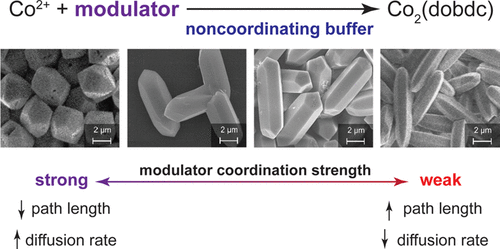
"Selective Nitrogen Adsorption via Backbonding in a Metal–Organic Framework with Exposed Vanadium Sites" Jaramillo, D. E.; Reed, D. A.; Jiang, H. Z. H.; Oktawiec, J.; Mara, M. W.; Forse, A. C.; Lussier, D. J.; Murphy, R. A.; Cunningham, M.; Colombo, V.; Shuh, D. K.; Reimer, J. A.; Long, J. R. Nat. Mater. 2020, 19, 517–521. [link] [pdf]
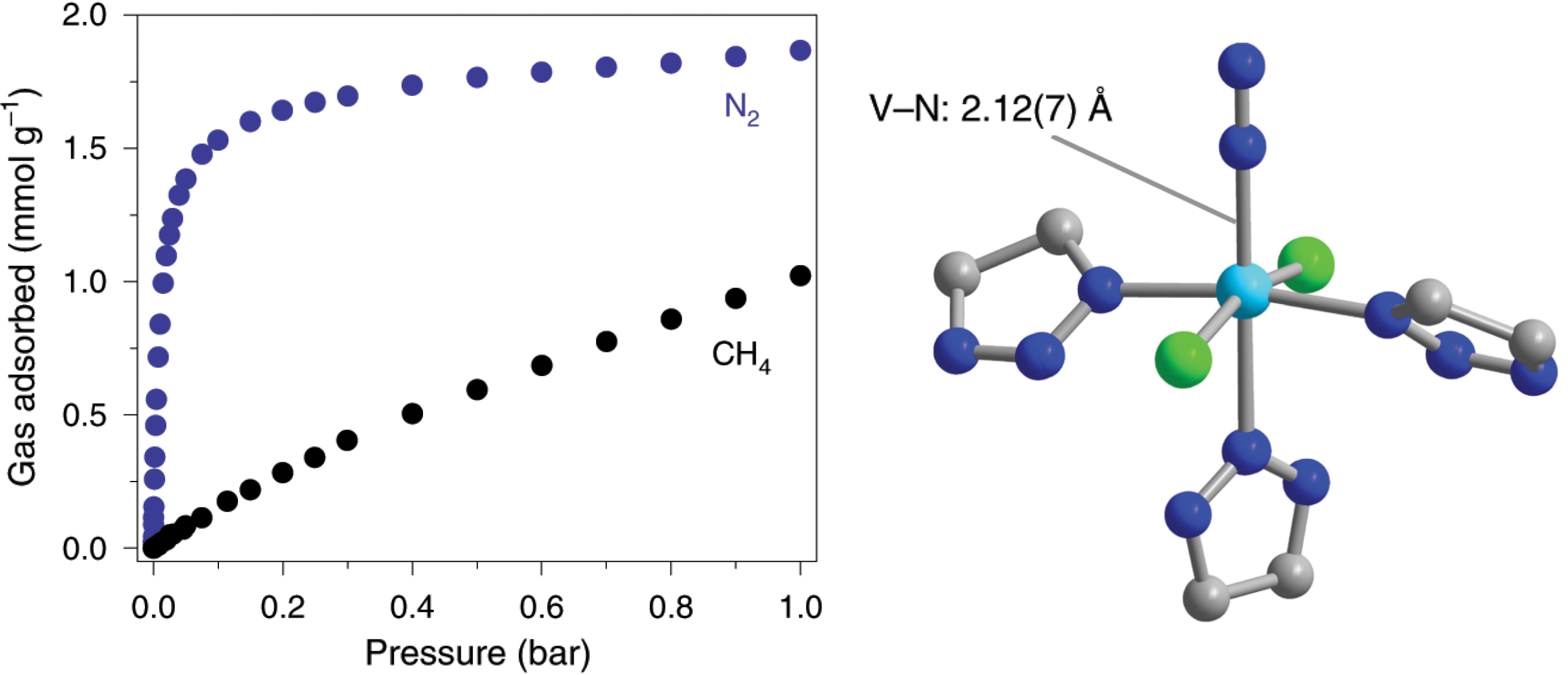
"A Spin Transition Mechanism for Cooperative Adsorption in Metal–Organic Frameworks" Reed, D. A.; Keitz, B. K.; Oktawiec, J.; Mason, J. A.; Runčevski, T.; Xiao, D. J.; Darago, L. E.; Crocellà, V.; Bordiga, S.; Long, J. R. Nature 2017, 550, 96–100. [link] [pdf]
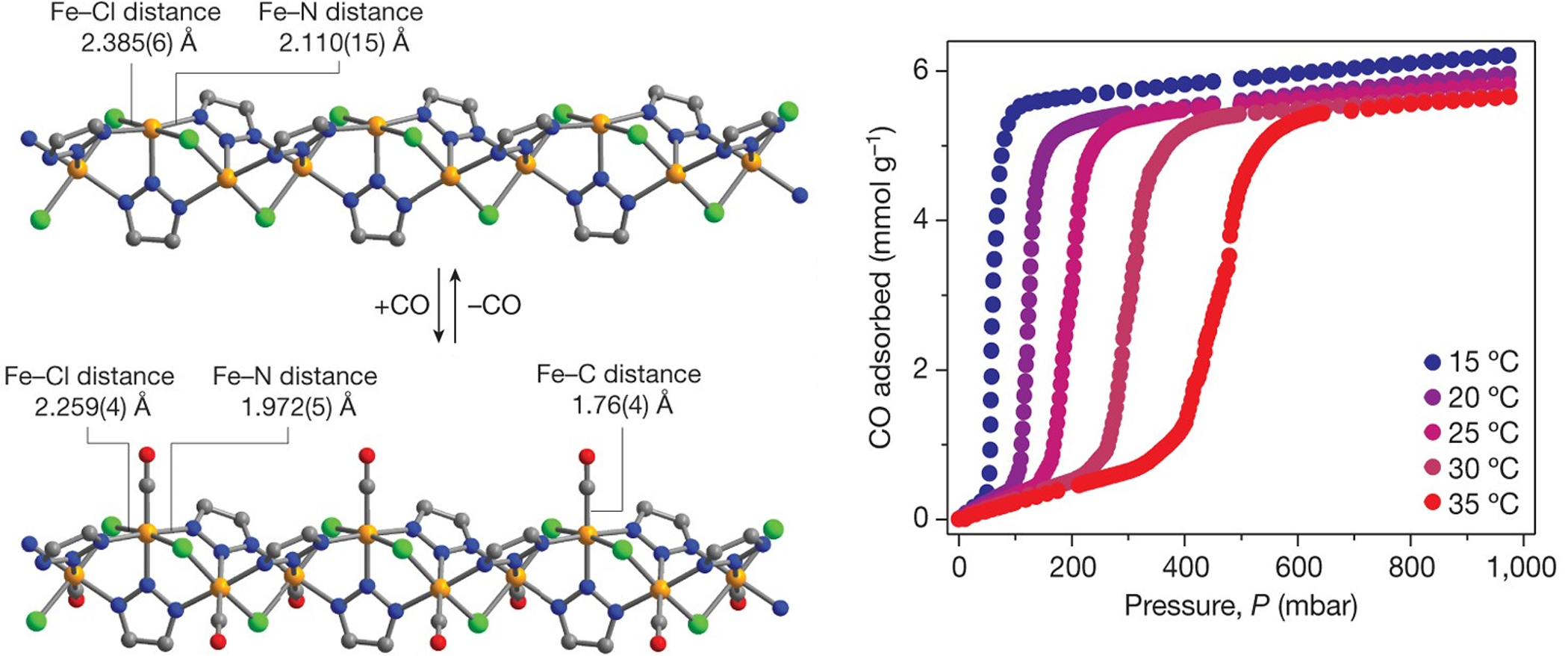
"Enhanced Ethylene Separation and Plasticization Resistance in Polymer Membranes Incorporating Metal–Organic Framework Nanocrystals" Bachman, J. E.; Smith, Z. P.; Li, T.; Xu, T.; Long, J. R. Nat. Mater. 2016, 15, 845–849. [link] [pdf]
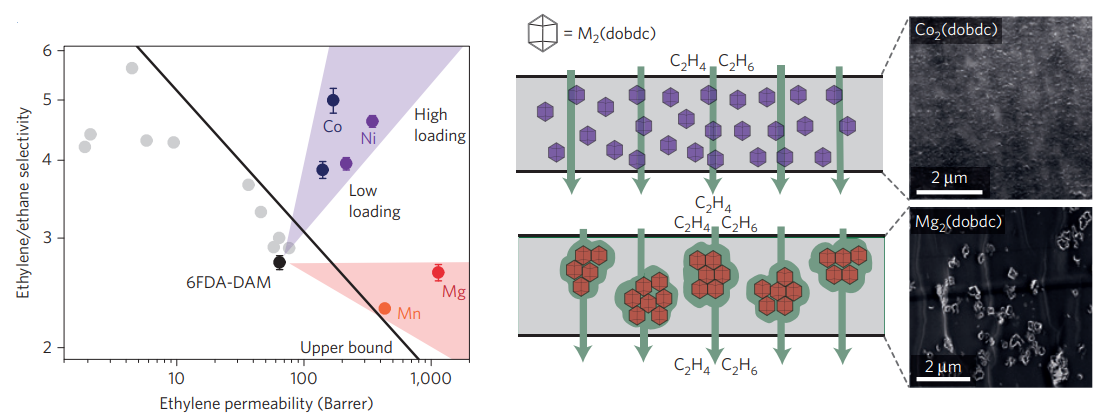
"Methane Storage in Flexible Metal-Organic Frameworks with Intrinsic Thermal Management" Mason, J. A.; Oktawiec, J.; Taylor, M. K.; Hudson, M. R.; Rodriguez, J.; Bachman, J. E.; Gonzalez, M. I.; Cervellino, A.; Guagliardi, A.; Brown, C. M.; Llewellyn, P. L.; Masciocchi, N.; Long, J. R. Nature 2015, 527, 357–361. [link] [pdf]

Quantum Magnetism in Molecular Materials
We are employing novel design principles and architectures precisely chosen to enhance operating temperatures within a class of compounds known as single-molecule magnets. These molecules exhibit a strong directional dependence to their magnetization (known as magnetic anisotropy) and magnetic hysteresis, previously thought to be exclusive to bulk magnets. As such, single-molecule magnets are of great interest for applications including quantum computing, quantum sensing, and even dark matter detection. Through the judicious manipulation of ligand fields, electronic structure, and magnetic interactions, we are endeavoring to create systems exhibiting striking new magnetic behaviors. Design motifs including highly anisotropic lanthanide ions, low-coordinate transition metals, and radical bridges are used to access unprecedented electronic structures, exceptionally strong magnetic exchange coupling, and anisotropies rivaling those of commercial permanent magnets. We are also creating new systems with potential applications in quantum information science, with the central hypothesis that molecular design principles established for single-molecule magnets can be adapted to give rise to a generation of electronic spin qubits with atomically precise local and global structures.
Selected Publications
"Ultrahard Magnetism from Mixed-Valence Dilanthanide Complexes with Metal-Metal Bonding" Gould, C. A.; McClain, R. A.; Reta, D.; Kragskow, J. G. C.; Marchiori, D. A.; Lachman, E.; Analytis, J. G.; Britt, R. D.; Chilton, N. F.; Harvey, B. G.; Long, J. R. Science 2022, 375, 198–202. [link] [pdf]

"Strong Ferromagnetic Exchange Coupling and Single-Molecule Magnetism in MoS43−-Bridged Dilanthanide Complexes" Darago, L. E.; Boshart, M. D.; Nguyen, B. D.; Perlt, E.; Ziller, J. W.; Lukens, W.; Evans, W. J.; Long, J. R. J. Am. Chem. Soc. 2021, 143, 8465–8475. [link] [pdf]
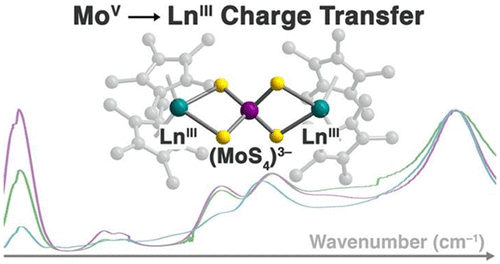
"Semiquinone Radical-Bridged M2 (M = Fe, Co, Ni) Complexes with Strong Magnetic Exchange Giving Rise to Slow Magnetic Relaxation" Chakarawet, K.; Harris, T. D.; Long, J. R. Chem. Sci. 2020, 11, 8196–8203. [link] [pdf]

"A linear cobalt(II) complex with maximal orbital angular momentum from a non-Aufbau ground state" Bunting, P. C.; Atanasov, M.; Damgaard-Møller, E.; Perfetti, M.; Crassee, I.; Orlita, M.; Overgaard, J.; van Slageren, J.; Neese, F.; Long, J. R. Science 2018, 362, eaat7319. [link] [pdf]

"Large Anisotropy Barrier in a Tetranuclear Single-Molecule Magnet Featuring Low-Coordinate Cobalt Centers" Chakarawet, K.; Bunting, P. C.; Long, J. R. J. Am. Chem. Soc. 2018, 140, 2058–2061. [link] [pdf]

"Giant coercivity and high magnetic blocking temperatures for N23− radical-bridged dilanthanide complexes upon ligand dissociation" Demir, S.; Gonzalez, M. I.; Darago, L. E.; Evans, W. J.; Long, J. R. Nat. Commun. 2017, 8, 2144. [link] [pdf]
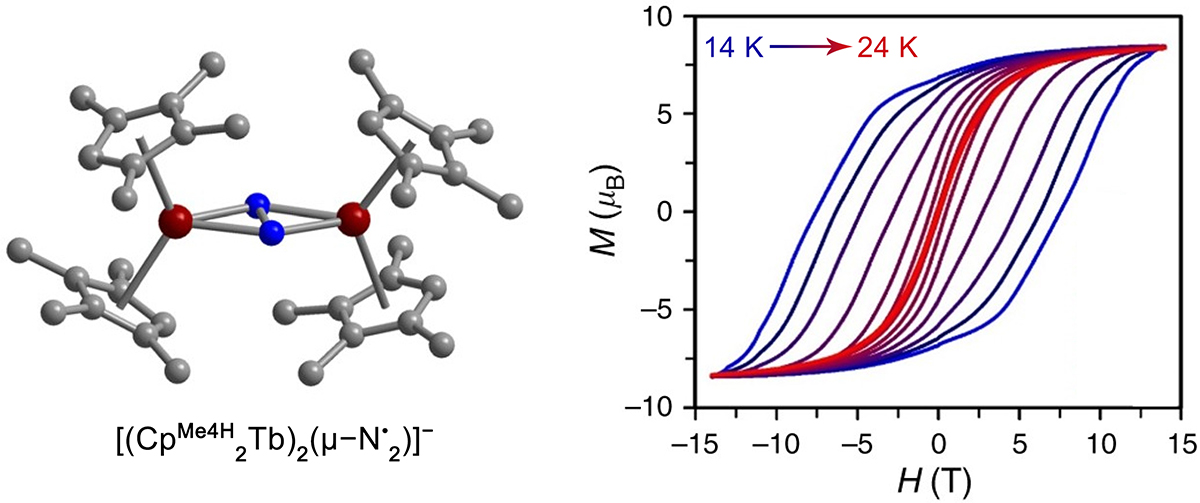
"Magnetic Blocking in a Linear Iron(I) Complex" Zadrozny, J. M.; Xiao, D. J.; Atanasov, M.; Long, G. J.; Grandjean, F.; Neese, F.; Long, J. R. Nat. Chem. 2013, 5, 577–581. [link] [pdf]
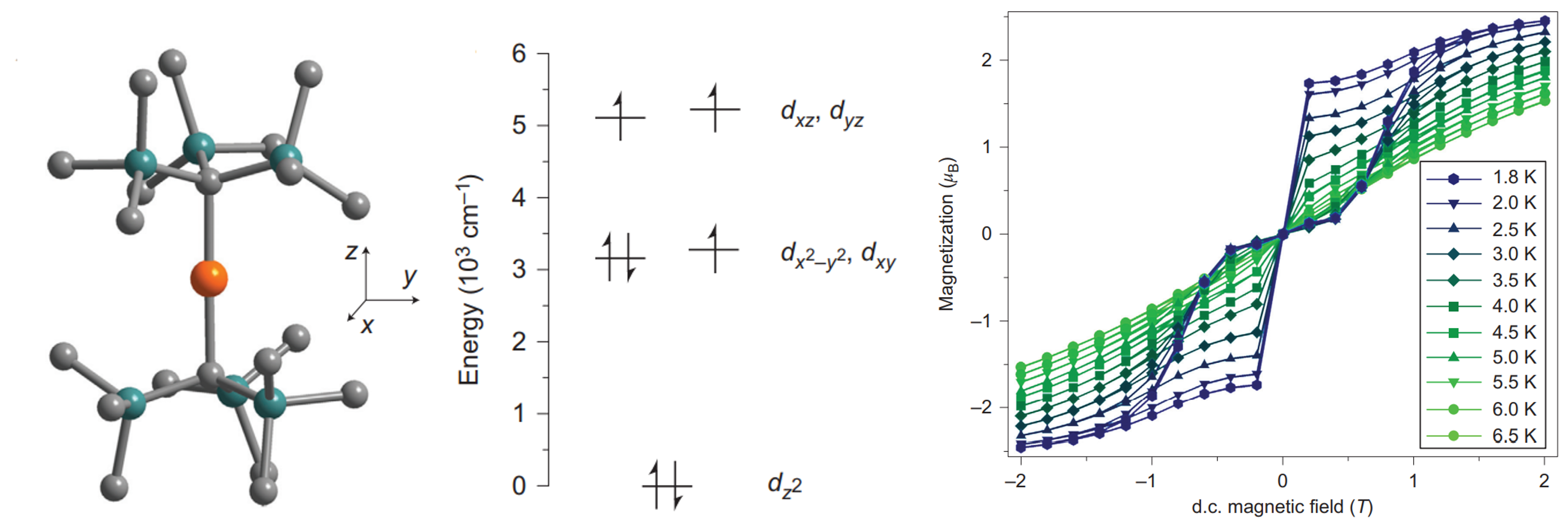
Porous Polymers and Composite Membranes
We are developing an emerging class of tunable porous network polymers known as porous aromatic frameworks (PAFs) for the selective recovery of metal ions and solutes for diverse separation and purification applications. PAFs exhibit extremely high surface areas and are buttressed by strong covalent bonds, rendering them extremely robust under harsh conditions, including strongly acidic, alkaline, and humid environments. We are also incorporating these functionalized PAFs into polymer membranes to generate high-performance composite membranes for implementation in novel and highly efficient membrane-based separation strategies.
Selected Publications
"Ion-Capture Electrodialysis Using Multifunctional Adsorptive Membranes" Uliana, A. A.; Bui, N. T.; Kamcev, J.; Taylor, M. K.; Urban, J. J.; Long, J. R. Science 2021, 372, 296–299. [link] [pdf]
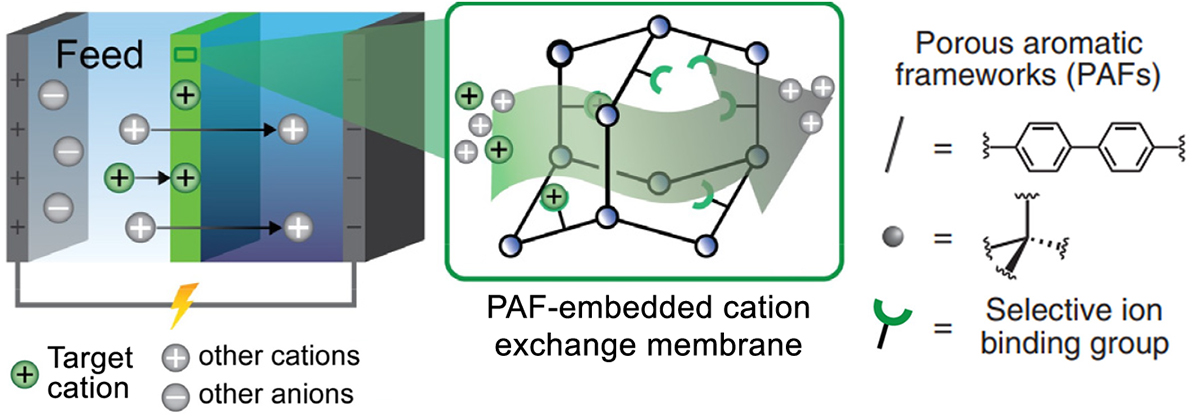
"Iron Detection and Remediation with a Functionalized Porous Polymer Applied to Environmental Water Samples" Lee, S.; Uliana, A.; Taylor, M. K.; Chakarawet, K.; Satyam Bandaru, S. R.; Gul, S.; Xu, J.; Ackerman, C. M.; Chatterjee, R.; Furukawa, H.; Reimer, J. A.; Yano, J.; Gadgil, A.; Long, G. J.; Grandjean, F.; Long, J. R.; Chang, C. J. Chem. Sci. 2019, 10, 6651–6660. [link] [pdf]

"Functionalized Porous Aromatic Frameworks as High-Performance Adsorbents for the Rapid Removal of Boric Acid from Water" Kamcev, J.; Taylor, M. K.; Shin, D.; Jarenwattananon, N. N.; Colwell, K. A.; Long, J. R. Adv. Mater. 2019, 31, 1808027. [link] [pdf]
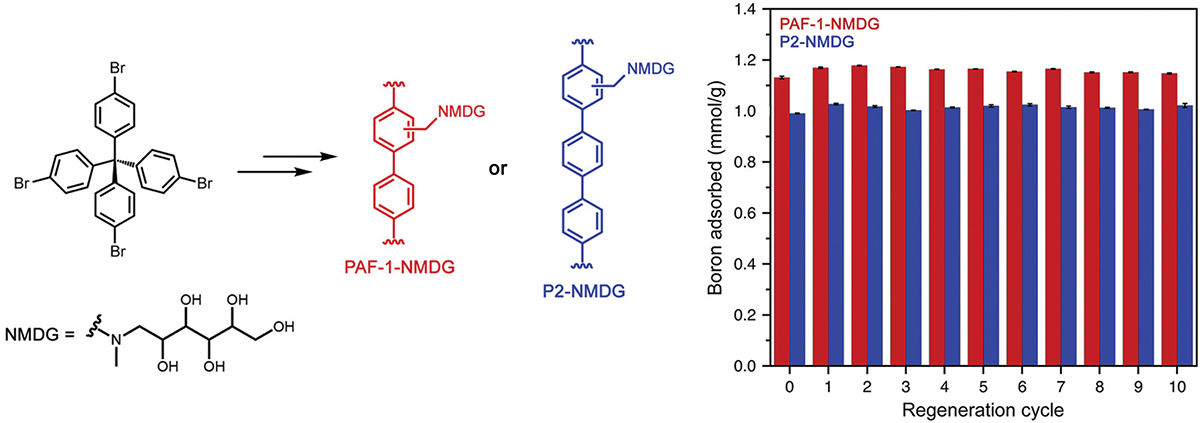
"Extraction of Lanthanide and Actinide Ions from Aqueous Mixtures Using a Carboxylic Acid-Functionalized Porous Aromatic Framework" Demir, S.; Brune, N. K.; Van Humbeck, J. F.; Mason, J. A.; Plakhova, T. V.; Wang, S.; Tian, G.; Minasian, S. G.; Tyliszczak, T.; Yaita, T.; Kobayashi, T.; Kalmykov, S. N.; Shiwaku, H.; Shuh, D. K.; Long, J. R. ACS Cent. Sci. 2016, 2, 253–265. [link] [pdf]
